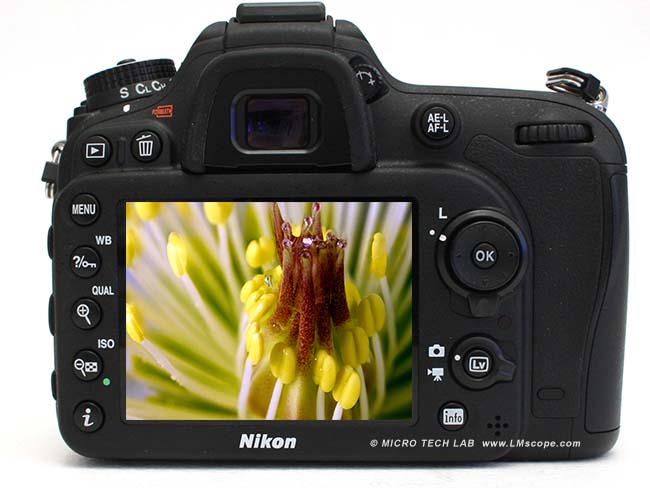

Which camera types are of interest for use in microscopy?
Since there are many different kinds of camera systems on the market, everyday users find it particularly easy to lose sight of the big picture. In fact, many people have trouble determining which cameras are suitable for use with microscopes and/or macroscopes. Although the following overview is not all-encompassing, we hope it will help you make sense of all the information available.
1) Digital single lens reflex (DSLR) cameras


Modern DSLR cameras have large, high-quality sensors. These days, DSLRs are available in APS-C, full-frame or four-thirds sensor format. The feature all of these cameras have in common is an interchangeable lens mount system fitted with a bayonet coupling. If you are using a camera on a microscope, all you need is the camera body. The camera is attached to a microscope adapter and fitted as a unit to the microscope port.

The camera can be attached to either the photo tube or the eyepiece tube of the microscope.

The adapter solution forms the connection between the camera and the microscope. A high-quality, plan achromatic optical system that produces excellent images without peripheral darkening is integrated into the adapter and allows optical adjustment according to the size of the camera’s sensor. Of course, not all DSLR cameras are equally suited for use in photomicrography. For more information, please refer to our camera recommendations and rankings.
2) Mirrorless system cameras


System cameras are typically smaller than DSLR cameras, as the complex mirror structure is omitted, but the built-in sensor is larger. The come with an interchangeable lens mount system that facilitates adapter-based microscope connections similar to DSLR cameras.


Since these cameras have no integrated optical viewfinder, the image is controlled via the display or, if available, remote control software.
3) C-mount & USB cameras

These special-purpose cameras also feature interchangeable lens mount technology which permits lenses to be removed. The connecting threads have a standard dimension of 1", which corresponds to a diameter of 25.4 mm. These unique types of cameras, which are used primarily in industry applications, usually have very small sensors (1/2" or 2/3"). Since they have no display, they can be controlled only by computer to which they are connected either via USB or FireWire port. As a rule, these cameras are significantly more expensive than DSLR or system cameras. In terms of image quality, DSLR and system cameras are demonstrably superior, but USB cameras often provide the benefit of comprehensive software integration.

An overview of the advantages and disadvantages of DSLR and special-purpose microscope cameras is available on our website.
4) Compact cameras


Compact cameras are by far the most popular type of digital camera, and the advantages they offer are obvious: they usually come in handy sizes, are easily operated and can cover a broad range of shooting situations (portraits, landscapes, people, snapshots, etc.). In most cases, they are also offered at very attractive price points.
Yet while cameras of this type may have distinct advantages, they are unsuited – with a very few exceptions – for use in the highly specialised field of photomicrography. Since most compact cameras are not equipped with interchangeable lens mount systems or filter threads, it is very difficult to attach them to a microscope mechanically and ensure a firm connection. More details on this product group can be found in our article “Compact cameras and camcorders on the microscope”.
5) Smartphones
Similar to compact cameras, smartphone-based camera systems do not have interchangeable lens mount systems or filter threads that enable the smartphone to be attached firmly to a microscope. Accordingly, we do not recommend their use in professional microscopy applications.
05.02.2016